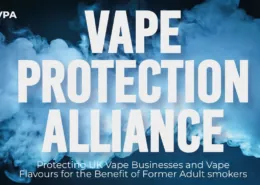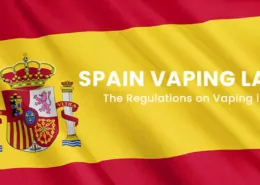Australia’s Missteps Fuel Thriving Black Market Vapes, Europe Should Take Note
Australia’s recent budgetary woes, with tobacco excise tax revenue nearly halved since 2019 and estimated cumulative losses of A$10 billion (€5.6 billion) by 2029, have been tied to the country’s thriving black markets for tobacco and nicotine products. Experts warn that this illicit trade boom is a direct consequence of Australia’s draconian approach to vaping regulation, which includes limiting the legal sale of vapes to pharmacies and implementing sweeping flavor bans.
These measures, disconnected from the latest scientific research, have not only undermined public health by restricting access to safer nicotine alternatives but have also pushed users either back to smoking or into the hands of unregulated black-market vape suppliers. As other countries, particularly those in Europe, explore new vaping regulations, Australia’s experience serves as a cautionary tale of a well-intentioned yet poorly-executed health strategy.
Australia’s Regulatory Missteps
Dr. James Martin of Melbourne’s Deakin University has decried Australia’s approach as a “total disaster,” triggered by the fundamental mistake of vastly hiking cigarette prices while severely restricting vaping products. This has led to a situation where over 90% of Australian vapes now circulate illegally without safety oversight, as reported by leading physician and researcher Dr. Colin Mendelsohn.
The consequences of this regulatory misstep are evident in the hundreds of violent attacks on tobacco and vape retailers nationwide, as well as the increasingly common seizures of illicit vaping products. Dr. Martin argues that the only way out of this self-inflicted crisis is to “legalize consumer vaping products,” warning that if nicotine continues to be made harder to access, consumers will inevitably turn to the illicit trade.
New Zealand’s Contrasting Approach
In stark contrast to Australia’s regulatory failures, New Zealand has successfully introduced similar tobacco taxation while legalizing vaping in 2020. This balanced approach has helped the country drive its adult daily smoking rate down at twice the pace of Australia’s over the past seven years, reducing smoking prevalence from levels higher than Australia’s to significantly lower in less than five years.
New Zealand’s supportive vaping stance has been instrumental in bringing the country closer to its smoke-free target of a sub-5% smoking rate, without triggering noteworthy black market activity. While the country’s recent disposable vapes ban has raised concerns among experts like behavioral scientist Dr. Marewa Glover, New Zealand has broadly succeeded in harnessing vaping’s potential for tobacco harm reduction.
Europe at a Crossroads
As European policymakers accelerate their efforts to regulate vaping, they must draw the right lessons from the contrasting experiences of Australia and New Zealand. Australia’s black market spike is not an isolated incident; similar regulatory excesses in North America, such as flavor bans in Quebec and California, have also led to rapidly expanding illicit markets.
Despite this evidence, roughly half of EU member states have either imposed or are exploring domestic bans on flavored vaping, overlooking the importance of flavors in tobacco cessation and harm reduction. At the EU level, vaping products are expected to face new rules under the upcoming revisions of the Tobacco Products Directive and Tobacco Excise Directive.
Initial findings on the Netherlands’ flavor ban are not encouraging, with 80% of Dutch vapers now purchasing from abroad, nearly 10% returning to smoking, and a mere 2% limiting themselves to the legal ‘tobacco’ flavor. These results align with Dr. Glover’s research, which concludes that over half of New Zealand’s vapers would circumvent a flavor ban if implemented, including by resorting to dangerous black market products.
The Need for Evidence-Based Policy
While no country has perfected its approach to vaping regulation, the UK’s forthcoming Tobacco and Vapes Bill appears to offer a more nuanced, evidence-based strategy. Crucially, the bill has tentatively avoided outright bans on essential flavor options that protect smokers from tobacco relapses, although the legislative debate is ongoing.
As harm reduction advocate Clive Bates asserts, even leading countries fall short, mired in an unfortunate combination of bans, taxation, and misinformation. To create balanced and effective regulations that tackle tobacco consumption without fueling new illicit markets, governments must stop imitating ill-advised international examples and instead follow robust scientific evidence, guided by independent experts.
Europe now stands at a critical juncture, where thoughtful action informed by Australia’s missteps and New Zealand’s successes can prevent the health, fiscal, and security risks of heavy-handed vaping regulation. By adopting scientifically-grounded vaping policies that ensure robust protection for youth and non-smokers while preserving regulated alternatives for adult smokers determined to quit tobacco, Europe’s leaders can navigate this complex landscape and promote public health.
- Austria Plans to Ban Disposable E-Cigarettes - August 5, 2025
- Vaping vs. THC Drinks: Which Cannabis Option Is Right for You? - August 4, 2025
- Colombia’s New Vape Law: A Reality Check on Enforcement - August 4, 2025








